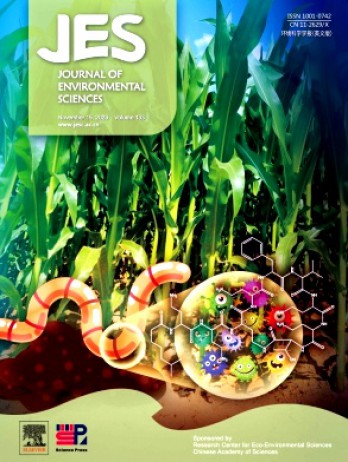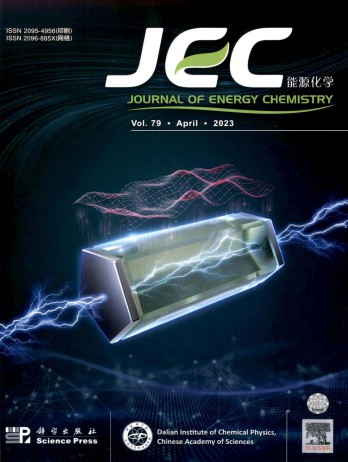《Journal of Arid Land》雜志論文格式要求:
Keywords: Immediately after the abstract, provide 3 to 7 keywords, closely related to the subject of the article. Avoid general and plural terms and multiple concepts (e.g., 'and', 'of').
Introduction: Provide an adequate background. State the significance, objective and method of the research, citing necessary references, especially references of work published in the last two to three years.
Study area/materials and methods: Introducing a general idea of the study area or experimental setting, the materials and methods used and the basic progress of the study. Provide sufficient detail to allow the work to be reproduced or substantiated.
Methods already published should be indicated by a reference.
Results: Relating the findings and results of the observation(s) and experiment(s) without interpreting their meaning. Results should be clear and concise.
Discussion: Explaining all of your observations within your experiment(s). Exploring the significance of the results, but do not repeat them in the text. Stating whether each of your hypotheses are supported, rejected or if you cannot make a decision with confidence, and suggesting future studies or modifications to the same study.
Conclusions: Presenting main conclusions of the study that may stand alone or creating a discussion subsection.
Acknowledgements: Acknowledgements should include, if applicable, information on grants received, funding organizations, and/or recognition of people who assisted in the research or article.
References: Please cite a reference to acknowledge sources of information from others’ research and results. Ensure that
every reference cited in the text is also present in the reference list. Citation guidelines are as follows: as (Smith, 1998) for single author, as (Smith and Miller, 1999) for two authors, and as (Smith et al., 2006) for three or more authors. Groups of references should be listed first chronologically, then alphabetically. In the reference list, references should be arranged first alphabetically, then chronologically, if necessary. More than one reference from the same author(s) in the same year must be identified by the letters "a", "b", "c", etc., placed after the year of publication. Journal names should not be abbreviated.
Reference examples:
Articles: Ames R N, Reid C P P, Porter L K, et al. 1983. Hyphal uptake and transport of nitrogen from two 15N-labelled
sources by Glomus misseae, a vesicular-arbuscular mycorrhizal fungus. New Phytologist, 95(3): 381?396.
Monograph: Lambers H, Stuart Chapin ΙΙΙ F, Pons T L. 2008. Plant Physiological Ecology. 2nd ed. New York: Springer Science+Business Media, 56?64.
Proceedings: Bernstein N, Kafkafi U. 2002. Root growth under salinity stress. In: Waisel Y, Eshel A, Kafkafi U. Plant Roots,
the Hidden Half. New York: Marcel Dekker Press, 787?805.
Electronic reference: UNESCO World Heritage Centre. 2008. Operational Guidelines for the Implementation of the World
Heritage Convention. Paris: UNESCO World Heritage Centre. [2009-11-17].
基本信息
《Journal of Arid Land》雜志是由中國科學(xué)院主管,中國科學(xué)院新疆生態(tài)與地理研究所;科學(xué)出版社主辦的國內(nèi)外公開發(fā)行的學(xué)術(shù)理論期刊,創(chuàng)刊于2009年,是國內(nèi)歷史領(lǐng)域具有廣泛影響力的權(quán)威刊物。
該雜志國內(nèi)刊號為65-1278/K,國際刊號為1674-6767,現(xiàn)被CSCD 中國科學(xué)引文數(shù)據(jù)庫來源期刊(含擴展版)、統(tǒng)計源期刊(中國科技論文優(yōu)秀期刊)、知網(wǎng)收錄(中)、維普收錄(中)、萬方收錄(中)、SCI 科學(xué)引文索引(美)、Pж(AJ) 文摘雜志(俄)、哥白尼索引(波蘭)、劍橋科學(xué)文摘、國家圖書館館藏、上海圖書館館藏、文摘與引文數(shù)據(jù)庫、文摘雜志等權(quán)威數(shù)據(jù)庫收錄。
此外,還榮獲多項榮譽,如:中國優(yōu)秀期刊遴選數(shù)據(jù)庫、中國期刊全文數(shù)據(jù)庫(CJFD)、中國學(xué)術(shù)期刊(光盤版)全文收錄期刊、中國科技期刊優(yōu)秀期刊等,這些都體現(xiàn)了該雜志在推動歷史理論與實踐發(fā)展方面的重要貢獻。
欄目設(shè)置
《Journal of Arid Land》雜志欄目涵蓋歷史領(lǐng)域多個維度,包括:學(xué)術(shù)論文、專題評述、研究簡訊、學(xué)術(shù)動態(tài)、書評等。
作為一本具有較高學(xué)術(shù)水平和影響力的歷史雜志,多年來一直致力于推動歷史領(lǐng)域的改革與發(fā)展,為歷史工作者和研究者提供了一個交流和探索的平臺,對促進我國歷史事業(yè)的發(fā)展起到了積極的作用。
《Journal of Arid Land》雜志往年文章平均引文率
聲明:本信息依據(jù)互聯(lián)網(wǎng)公開資料整理,若存在錯誤,請及時聯(lián)系我們及時更正。



